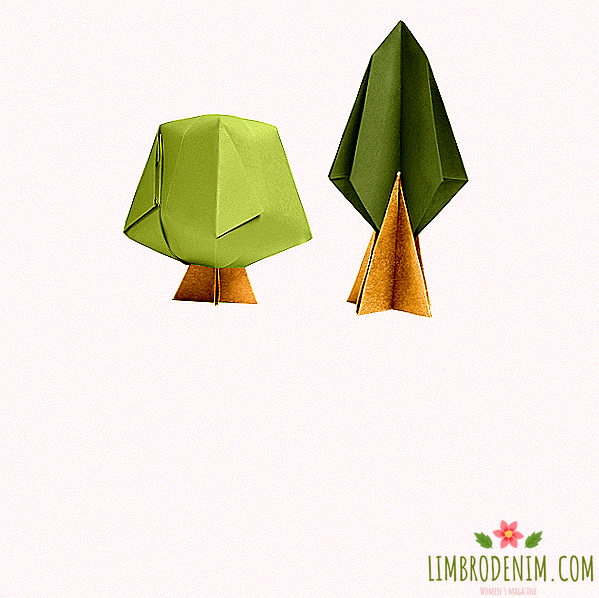How to become a responsible consumer: 6 basic principles
"Sustainable fashion", that is, ethical fashion production, attentive to the environment and guaranteeing humane and fair working conditions, until recently it seemed a rarity that a narrow audience supports. However, he was quickly picked up by designers and brands completely different from each other: today H & M urge MIA singer Karl Lagerfeld to advertise his collection program, Karl Lagerfeld produces a couture eco-collection, adidas make sneakers from the garbage raised from the ocean floor, Emma Watson appears on the carpet Calvin Klein and Eco-Age dress made from recycled plastic bottles. A new trend is not going away, unlike most others.

The capital of the responsible steel production movement is Stockholm and Copenhagen: in Sweden, the H & M team presents grants to eco-designers and biologists, and the crown princess Victoria is speaking at the H & M Global Change Awards awards ceremony. Denmark hosts the Copenhagen Fashion Summit conference on ethical fashion, which attracts dozens of industry professionals, from glossy fashion directors to denim manufacturers. The latter, by the way, are perhaps the most active environmental pollutants. The fashion industry ranks second in the list of the most harmful industries, losing only oil.
The fact that today the face of ethical production suddenly became the mass market giant H & M, there is some irony. After all, companies in this segment produce the most cheap things, repacking the market and encouraging consumers to buy more and more often. H & M alone produces about 600 million pieces of clothing per year. The eco-friendly rulers Conscious and Conscious Exclusive, bonuses for scientists, a program for collecting old things - all these and other initiatives of the brand cannot yet fully compensate for the harm done.
Providing a wider choice of responsibly produced things is one of the main tasks of those industry players who are really concerned with the ethics of fashion. Everyone speaks of this, from the model of Amber Valletta to the fashion director of The New York Times, Vanessa Friedman. 74% of British consumers are willing to pay a little more for a thing if they know that it was produced in compliance with all ethical standards. Another thing is that the appearance and quality are still for buyers much more important factors.
Here we come to the issue of responsibility not only for manufacturers, but also for buyers. More and more people adhere to the concept of responsible consumption. Because, even though we cannot change the fashion globally and immediately, we can change our own consumer habits to begin with, and the industry will eventually have to respond to this. So what to do to become an informed buyer?

Buy less
The “just produce less” counter-suggestion may sound rational, but, as we have already found out, none of the brands is ready to do that. But we, on our part, can still buy less. According to a study conducted by WRAP, the total value of items that have not been worn for at least a year in the wardrobe of British buyers is 30 billion pounds. And although this impressive figure is already four years old (the study was conducted in 2012), we do not think that during this time something has changed drastically. And even the opposite, considering how quickly the clothing market is growing, this figure could only increase. Today, as they say in one film, The True Cost, people buy 400 percent more clothes than twenty years ago.
Before you buy something, think about whether you really need it? In this sense, the mass market, with its regular promotions and cheerful T-shirts of 300 rubles each, is especially tricky, shouting very convincingly from the shelves: “Buy me! Buy!” These "voices" in your own head are important to learn to drown, instead of a dozen unnecessary things by buying one - but such that it is special for you. And I would live longer than one season.
Wear things long
The fact that you wore a certain thing for several years, in a sense, redeems the harm that was done to the environment during its production. An excellent example would be jeans made from primary cotton. On the cultivation of cotton, which will go to a single pair, is spent, according to various estimates, up to 10 thousand liters of water. In addition, about 25% of the pesticides used in the world are applied on cotton plantations.
Good jeans are a durable thing. And over the years they, unlike sweaters or shirts, become only more interesting: finally they sit down on a figure, wipe beautifully and even fade with dignity. So new ones, if you do not live in a constant race for trends, will definitely be needed very, very soon.

Do not throw things away.
The average American, as described in the same "The True Cost", throws about 40 kilograms of clothing a year, and the total weight of "clothing" garbage collected during the same period by residents of the United States is estimated at about 11 million tons. And a very small percentage of this huge load consists of tissues that decompose on their own, without additional intervention. Polyester - the most popular material from mass-market brands - can lie in the ground for up to 200 years.
Instead of just throwing things away, no matter how presentable they look, try giving them a new life. The easiest way to do it again is with H & M. Their collection program for old things, mentioned more than once in this text, has been in effect since 2013. Things - not only clothes, but also bed linen and in general any other textiles - can be handed over in any of the brand’s stores, which are around 4,000 worldwide. They will deal with them there already without your participation: some will be sent to second-hand, some will be sent for recycling. This is probably the easiest thing you can do.
There are other options: what you do not need, it may well be useful to someone else. Maybe in your childhood you were annoyed by the need to wear the stupid shorts of your older brother, because parents felt sorry for throwing them away, but in general it was a very wise decision - not only financially, but also from the point of view of responsible consumption. In the absence of younger sisters, you can turn to your girlfriends - no wonder everyone loved swaps so much. Or place an ad in one of the many groups "Give a gift" (or not for nothing), where there is a hunter for your things. And finally, something can always be given to charity - this option, as the most obvious, we have postponed for the last.
Choose ethical brands
It is not necessary to be limited to exclusively "green" marks, if so deep immersion while you are afraid. For starters, you can get acquainted with the rating of the most responsible brands, which every year is Corporate Knights. Here in the first half only adidas, H & M and Marks & Spencer represent the fashion industry. Or with a recent list of Greenpeace. In such ratings there will definitely not be unfamiliar names. Excessive efforts to follow the new rules from you at first will not require - to understand everything thoroughly have time later, the benefit of information on the Internet is full.
From the Russian brands, and "green", and visually cool at the same time, we single out one - Go Oli Glagoleva. Olya releases collections only with companies or people who share the same values. You can find a variety of things in it: from sweatshirts made from recycled plastic bottles to hemp dresses with outstanding hand embroidery and sea shell buttons.

Support local producers
First, keep track of what conditions and materials from which the things you buy are sewn. It's easier to deal with this if we are talking about a small local brand, and not a multi-million dollar corporation. The conditions in which the masters work are also, by the way, a very important criterion in assessing the ethics of a brand - to see this for sure, see, for example, the dreaded documentary "Blue China".
Secondly, local brands cause less harm to the environment, if only because their products do not require transportation over long distances. And finally, thirdly, this is how you invest in slow fashion - a fashion focused on quality, manual labor and almost piece production in small quantities.
Go to second-hand
Many of us already love second-hand and vintage shops simply because there you can always find something cool that nobody else will definitely have. And designers from season to season in search of inspiration look back at the fashion of different decades and scour the same clothes for the ruins. The famous Moscow "MEGastil" and almost all officially called the pantry ideas Vetements. So why bother with your own wallet to encourage overproduction, if there are already so many things already produced, that it will be enough for at least another couple of lives?
From second-hand, which is nice, you can carry things out without remorse from even the most eerie fabrics: for example, something polyester and leopard. Anyway, buying something there, you give the old thing a new life - and that's good. At the same point, we write down and upsaykling designers - those who sew their collections from things that were already in use. Olya Glagoleva, mentioned above, also has such, and, for example, the wonderful Ukrainian woman Yasi Khomenko - we also advise you to pay special attention to her brand RCR Khomenko.
Photo: H & M Conscious Exclusive, Ports 1961, Ji Oh, Circle of Unity





